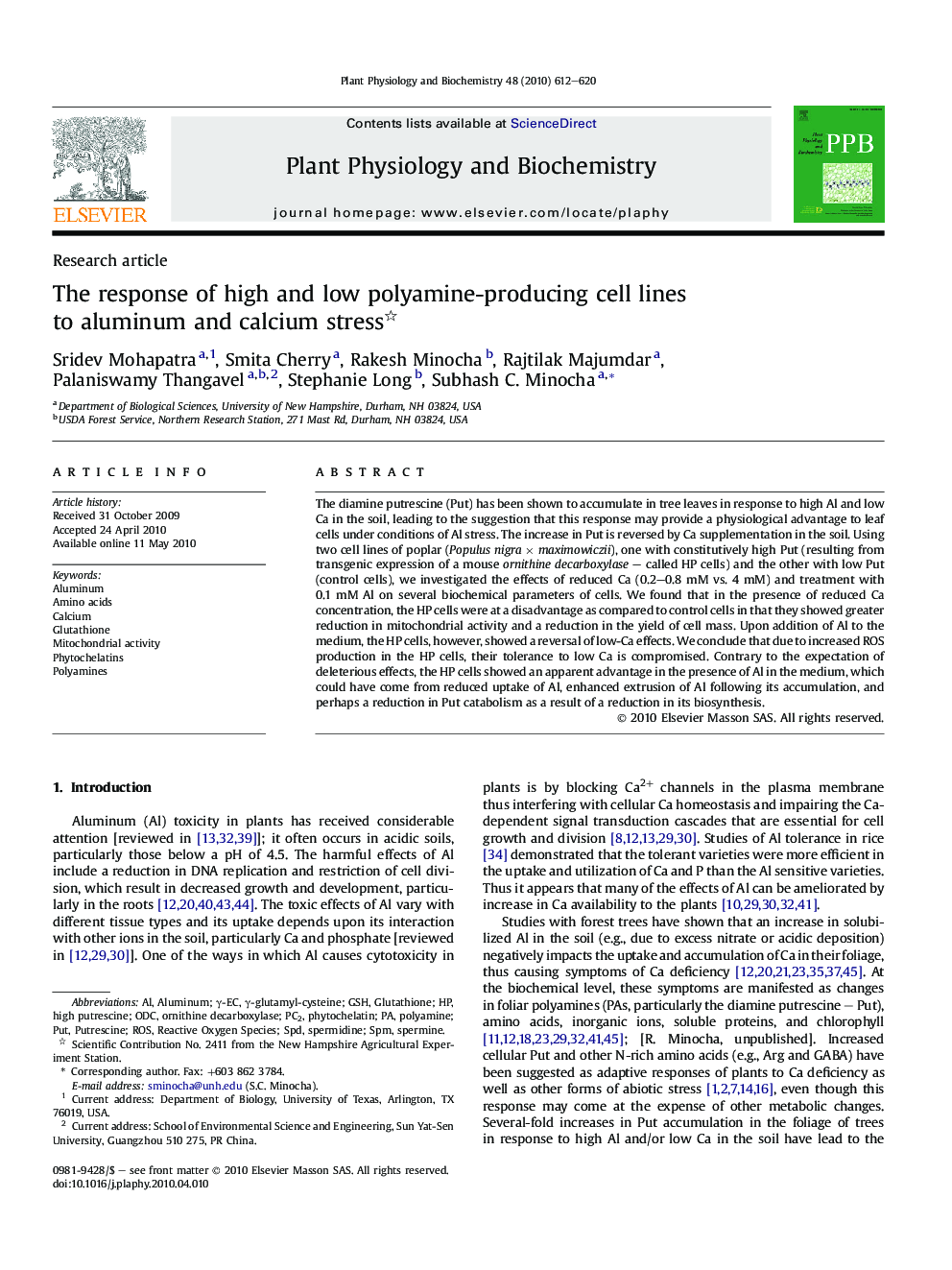| Article ID | Journal | Published Year | Pages | File Type |
|---|---|---|---|---|
| 2015377 | Plant Physiology and Biochemistry | 2010 | 9 Pages |
The diamine putrescine (Put) has been shown to accumulate in tree leaves in response to high Al and low Ca in the soil, leading to the suggestion that this response may provide a physiological advantage to leaf cells under conditions of Al stress. The increase in Put is reversed by Ca supplementation in the soil. Using two cell lines of poplar (Populus nigra × maximowiczii), one with constitutively high Put (resulting from transgenic expression of a mouse ornithine decarboxylase – called HP cells) and the other with low Put (control cells), we investigated the effects of reduced Ca (0.2–0.8 mM vs. 4 mM) and treatment with 0.1 mM Al on several biochemical parameters of cells. We found that in the presence of reduced Ca concentration, the HP cells were at a disadvantage as compared to control cells in that they showed greater reduction in mitochondrial activity and a reduction in the yield of cell mass. Upon addition of Al to the medium, the HP cells, however, showed a reversal of low-Ca effects. We conclude that due to increased ROS production in the HP cells, their tolerance to low Ca is compromised. Contrary to the expectation of deleterious effects, the HP cells showed an apparent advantage in the presence of Al in the medium, which could have come from reduced uptake of Al, enhanced extrusion of Al following its accumulation, and perhaps a reduction in Put catabolism as a result of a reduction in its biosynthesis.
